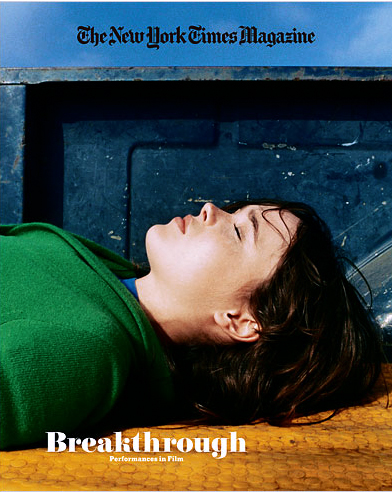I’d be lying if I didn’t say I was intimidated by working down the hall from legendary Rolling Stone Director of Photography Jodi Peckman. She’s garnered every accolade the photo industry can hand out and her rolodex is the size of a parmesan cheese wheel.
As it turned out my fear was unfounded because she’s a real sweetheart who’s willing to chat at length about working as a photo editor as well as happy to debate the merits of working with any of photographers in this industry.
I thought I’d ask her a few questions:
1. People ask me all the time how I became a photo editor and I’d be willing to bet everyone’s story is different. What’s yours?
Wellllllll… I had a friend who was the assistant to the Art Director here and I used to visit her at work and hang around the office a lot. I was still in school at the time. The Art and Photo Directors got to know me and so I would help out returning film or any small stuff they wanted. At the same time I was also printing photos for the guitarist of the band The Police (he’s a photographer). The Photo Director (Laurie Kratochvil) asked me if I wanted a real job, so she sent me to a photo agency where they hired me to file photos. I ended up working there for quite sometime and eventually left to hang out with my brother who lived in Italy. When I returned Laurie asked me if I wanted to work at Rolling Stone on the Random Notes section. I said yes, and I’m still here.
2. You’ve been a Rolling Stone a long time and I know there’s huge advantages to working within a specific genre having spent my entire career working with outdoor sports and athletics but how do you stay excited and challenged by the subject matter?
The best part about working here is that really it’s not just a music magazine. The range of what we cover is pretty big. We’ve got movies, TV, internet, politics, sports, crime, foreign and national affairs, environment and more. So, I don’t really see it as one genre. That being said, I’ve had to reinvent the job many times over. Coming to the same office, same desk, same everything for this long can get pretty weird and repetitive. The people around here change so that’s good and new photographers crop up all the time. I’m a creature of habit, so staying put suits my lifestyle (I eat a hamburger almost everyday).
3. One of the biggest challenges for me as a Photography Director was hearing, “you can’t hire that photographer” or “we’re not going to run that photo” and not taking it personally. How do you deal with it?
When you’ve been someplace this long you don’t really hear that too often. I guess they figure I know the magazine pretty well by now and fortunately my opinion holds some weight.
4. Do you still look at promo cards? What about promo emails?
Don’t really look at them. Well, I look at them of course, when they come in, but they rarely relate to anything we do here. Seriously, I get photographers who shoot babies and food send stuff all the time. I try so hard to open all the emails, and there are hundreds, but it’s not always realistic. There’s just not enough time. I feel terrible about that and I always promise myself I’ll try harder.
5. I found I didn’t have enough work for even my core group of photographers let alone adding new ones to the list. Do you still add new photographers to your list of people to hire?
We do. Not too many cover shooters tho.
6. Any predictions on how the photography industry will look 5 years from now? How about the magazine industry?
Ahhhh, magazines and newspapers will be around forever. I’m not too good about predicting the future, I’m livin’ in the moment all the time.
These next two questions come from an aspiring Rock and Roll photographer and reader of my blog.
7. In music photography, more so than other kinds of photography, people are willing give away their work for free or in exchange for access. Even musicians ask for photos in return for access. Magazines and festivals also seem to be trading access for photos. An example is the SPIN correspondent program, (here) How do you make a living (or at least part of a living) in that kind of atmosphere?
They’re giving you better access so you should be able to make better pictures. Better pictures should lead to more work. I worked here for free and so do our interns. We end up hiring half the people who are interns.
8. What is the best way to for a photographer to get their foot in the door at Rolling Stone? What assignments should newcomers approach (i.e. festivals)?
Being a concert photographer is brutal. So much competition. Find something special you do well and different from the others and work on an interesting and unique portfolio.
9. I always loved seeing the contact sheets from a shoot for the first time and in many ways that was better then seeing something printed in the magazine. What’s your favorite part of being a Photography Director?
Well it isn’t opening the box of photos. I’m always too nervous. Looking at pictures is so interesting and inspiring, and I really like photographers. I meet interesting people all the time. It’s creative and I feel that I am a part of what makes Rolling Stone what it is and how it looks. I feel so so lucky to have fallen into this job.
10. If you never got a job at Rolling Stone what would you be doing right now?
Beats me.
